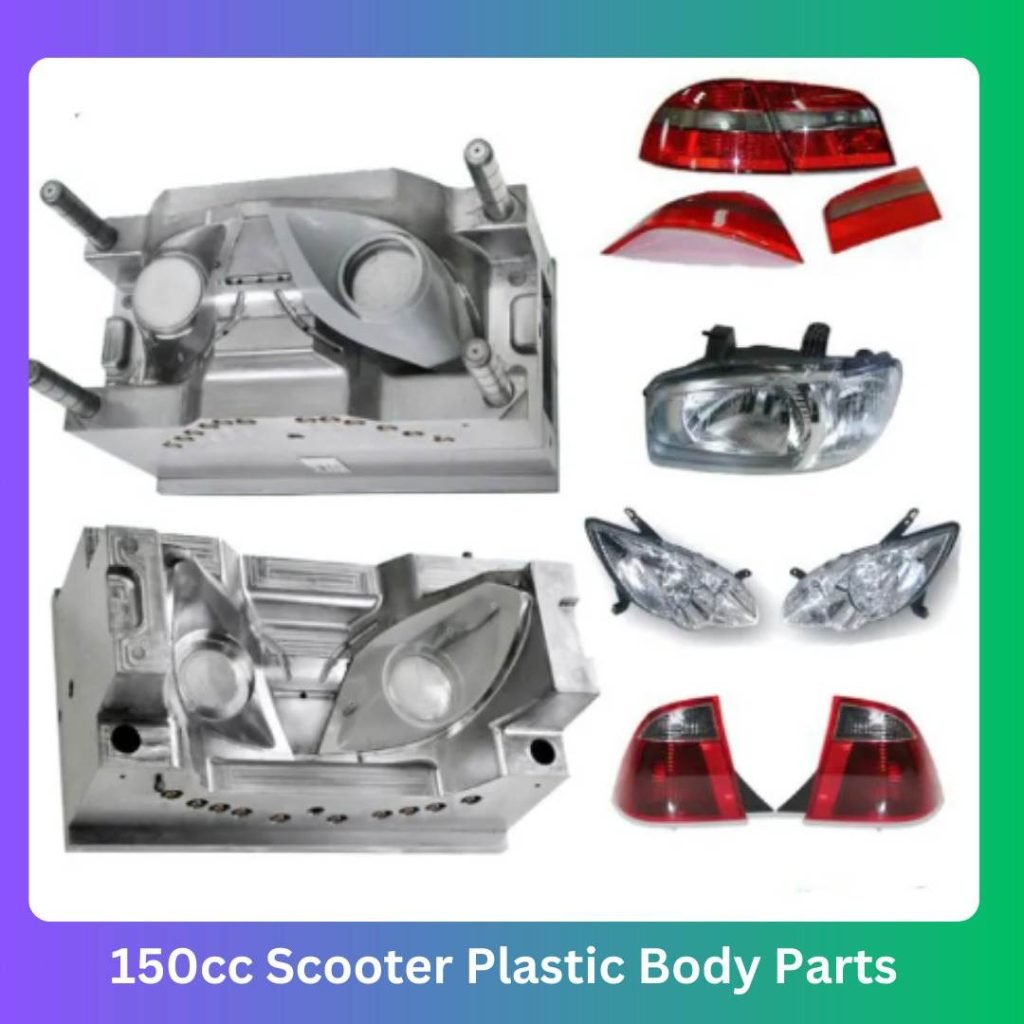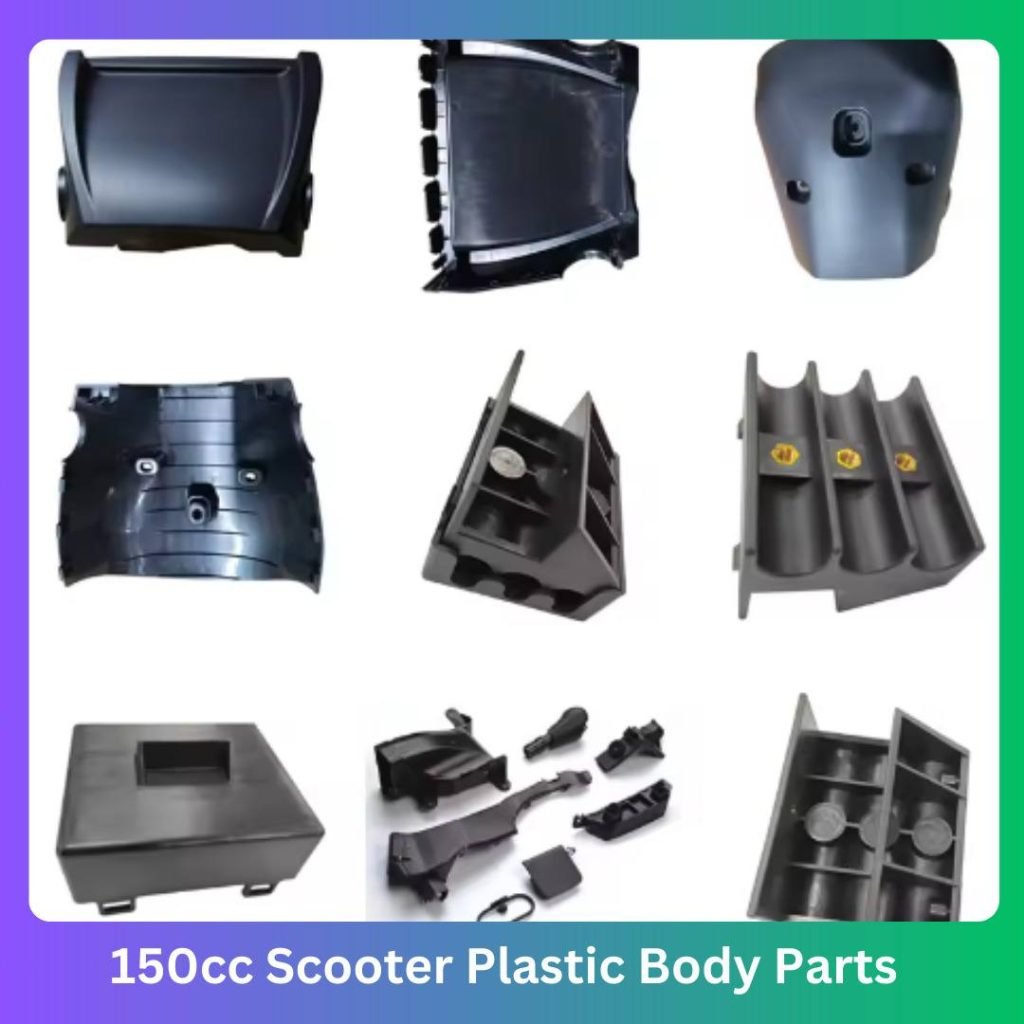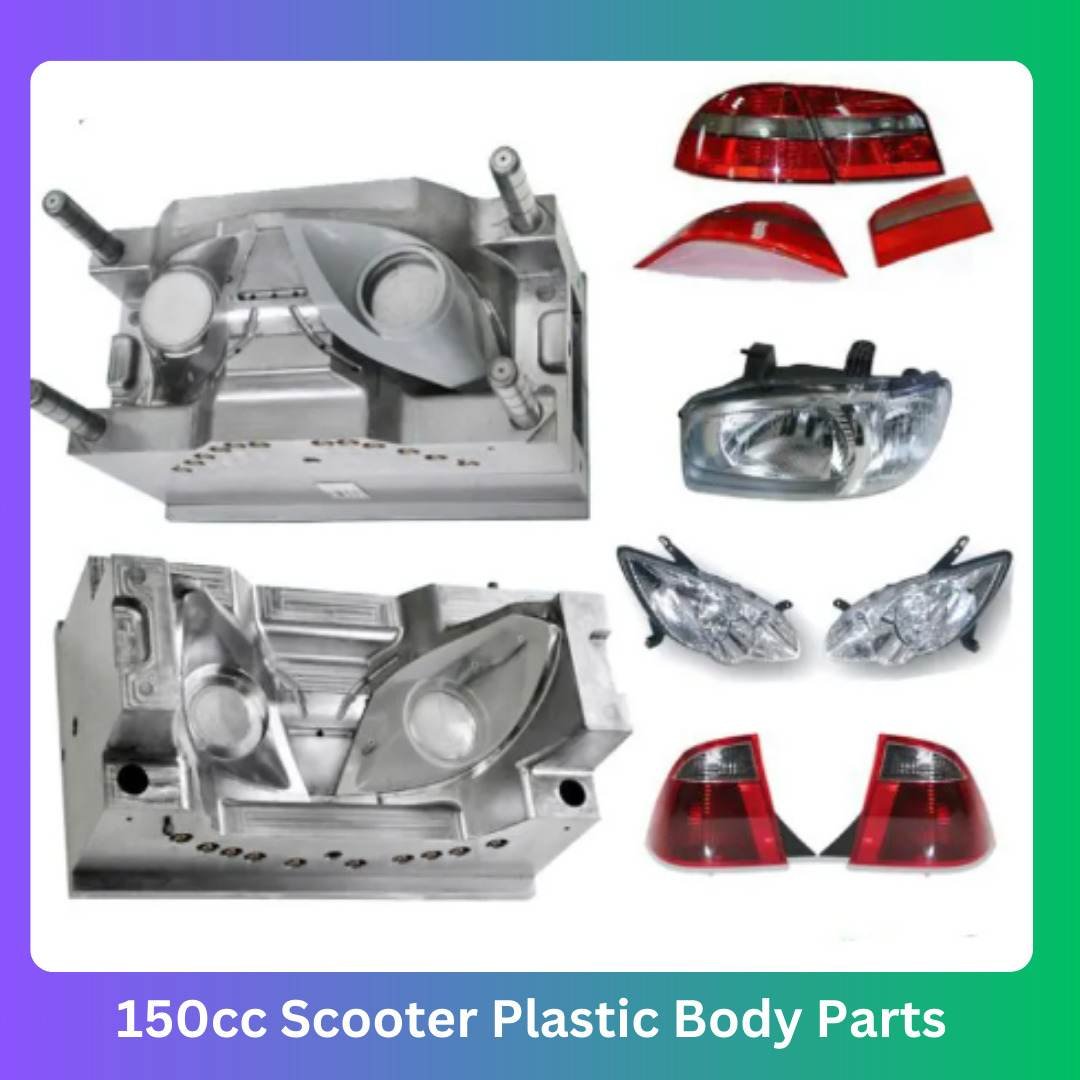Scooters, especially those with 150cc engines, are increasingly popular for their balance of power, efficiency, and affordability. A crucial aspect of these vehicles is their plastic body parts. These components not only contribute to the aesthetic appeal but also serve practical functions such as protection, weight reduction, and aerodynamics. This guide explores every facet of 150cc scooter plastic body parts, including their types, materials, functions, maintenance, and the process of replacement and customization.
Table of Contents
- Introduction
- Materials Used in Plastic Body Parts
- Types of Plastic Body Parts
- Functions of Plastic Body Parts
- Maintenance of Plastic Body Parts
- Common Issues and Solutions
- Replacement and Customization
- Cost and Availability
- Environmental Impact
- Case Studies
- Future Trends
- Conclusion
1. Introduction
Overview of 150cc Scooters
150cc scooters represent a sweet spot in the scooter market, offering enough power for urban commuting and occasional highway use while remaining fuel-efficient and easy to handle. These scooters are popular worldwide due to their versatility and affordability.
Importance of Plastic Body Parts
Plastic body parts are integral to the design and functionality of 150cc scooters. They provide protection to vital components, contribute to the vehicle’s aerodynamics, and play a significant role in its overall aesthetic appeal. Moreover, they are lighter than metal parts, which helps in improving the scooter’s performance and fuel efficiency.150cc scooter plastic body parts is very chef.
2. Materials Used in Plastic Body Parts
ABS (Acrylonitrile Butadiene Styrene)
ABS is a common material used in the manufacturing of scooter body parts. It is known for its strength, durability, and resistance to impact. ABS is also relatively easy to mold, allowing manufacturers to create complex shapes and designs.
Polypropylene
Polypropylene is another widely used plastic material. It is known for its flexibility and resistance to chemical solvents, acids, and bases. Polypropylene is lightweight and has good fatigue resistance, making it ideal for parts that require some degree of flexibility.
Polycarbonate
Polycarbonate is known for its high impact resistance and optical clarity. It is often used in parts that need to be both durable and transparent, such as headlight housings. Polycarbonate is more expensive than ABS and polypropylene but offers superior strength and clarity.

Differences and Comparisons
Each material has its own set of advantages and disadvantages. ABS is excellent for its strength and durability, polypropylene is valued for its flexibility and chemical resistance, and polycarbonate is preferred for its impact resistance and clarity. The choice of material depends on the specific requirements of the part being manufactured.150cc scooter plastic body parts
3. Types of Plastic Body Parts
Front Fairing
The front fairing is the most prominent part of the scooter and plays a crucial role in its aerodynamics. It covers the front of the scooter, protecting the headlight, indicators, and instrument panel from damage. The front fairing is often designed to reduce wind resistance and improve the scooter‘s fuel efficiency.
Side Panels
Side panels cover the sides of the scooter, protecting the engine, battery, and other internal components. They are essential for maintaining the structural integrity of the scooter and also contribute to its overall look. Side panels can be customized with decals and paint jobs to reflect the rider’s personality.
Rear Fairing
The rear fairing extends from the seat to the tail light, covering the rear suspension and storage compartment. It enhances the scooter’s aerodynamics and provides protection against dirt, debris, and impacts. The rear fairing often integrates the taillight and indicators.
Fenders
Fenders are located above the wheels and prevent mud, water, and debris from being flung into the air by the rotating tires. They are crucial for keeping both the scooter and the rider clean. Fenders are typically found on both the front and rear wheels.
Handlebar Cover
The handlebar cover protects the handlebars and control mechanisms from damage and weather. It also adds to the aesthetic appeal of the scooter, giving it a polished and cohesive look. The handlebar cover may include spaces for switches, mirrors, and other accessories.
Footboard
The footboard is where the rider places their feet while riding. It needs to be durable and provide good grip to ensure rider safety. The footboard is exposed to a lot of wear and tear and should be easy to clean and maintain.
Headlight and Taillight Housings
These housings protect the lighting elements of the scooter. They need to be durable and impact-resistant to ensure the lights function correctly and remain intact. Headlight and taillight housings are often made from polycarbonate due to its superior clarity and strength.
Other Components
Other plastic components include the glove box, under-seat storage compartment, and various trim pieces. These parts enhance the scooter’s functionality and provide additional storage and convenience for the rider.150cc scooter plastic body parts
4. Functions of Plastic Body Parts
Aesthetic Appeal
Plastic body parts significantly contribute to the scooter’s aesthetic appeal. They can be molded into various shapes and designs, allowing manufacturers to create visually appealing scooters. Customization options such as different colors and decals enable riders to personalize their scooters.
Protection
Plastic body parts protect the scooter’s internal components from damage caused by debris, weather, and impacts. They help in prolonging the life of the scooter and ensure that critical components remain functional.
Aerodynamics
The design of plastic body parts can enhance the scooter’s aerodynamics, reducing air resistance and improving fuel efficiency. Aerodynamic fairings and panels allow the scooter to cut through the air more efficiently, resulting in better performance.
Weight Reduction
Plastic parts are significantly lighter than metal parts, contributing to the overall weight reduction of the scooter. This not only improves fuel efficiency but also enhances the scooter’s handling and maneuverability.

5. Maintenance of Plastic Body Parts
Regular Cleaning
Regular cleaning is essential to maintain the appearance and functionality of plastic body parts. Use a mild detergent and water to remove dirt and grime, avoiding harsh chemicals that can damage the plastic. A soft cloth or sponge is ideal for cleaning the surfaces without scratching them.
UV Protection
Prolonged exposure to sunlight can cause plastic parts to fade and become brittle. Use a UV protectant spray to shield the plastic from harmful UV rays. Parking the scooter in a shaded area or using a cover can also help prevent UV damage.
Inspection and Repair
Regularly inspect the plastic body parts for any signs of cracks, scratches, or other damage. Early detection allows for timely repairs or replacements, preventing further deterioration. Small scratches can often be polished out using a plastic polish.
Storage Tips
When storing your scooter for extended periods, ensure it is kept in a dry, cool place. Cover it with a breathable cover to protect it from dust and moisture. This will help prevent plastic parts from warping or becoming damaged.
6. Common Issues and Solutions
Cracks and Breaks
Cracks and breaks in plastic body parts can occur due to impacts or stress. Small cracks can be repaired using plastic welding techniques or adhesive fillers. For larger breaks, it may be necessary to replace the damaged part entirely.
Fading and Discoloration
Fading and discoloration are common issues caused by exposure to sunlight and weather. Using a UV protectant and regularly cleaning the scooter can help prevent these problems. If the plastic has already faded, repainting or replacing the part may be necessary.
Mounting Problems
Loose or improperly mounted plastic parts can cause rattling and vibrations. Ensure that all mounting screws and clips are secure. If any mounting points are damaged, they should be repaired or replaced to ensure a proper fit.
Fixing Scratches and Scuffs
Scratches and scuffs can be fixed using plastic polish or scratch removers. For deeper scratches, sanding and repainting the area may be required. It’s important to use products specifically designed for plastic to avoid further damage.
7. Replacement and Customization
Identifying Replacement Parts
When identifying replacement parts, it’s important to know the make, model, and year of your scooter. This information ensures that you get parts that fit correctly and function as intended. Many manufacturers offer detailed parts catalogs that can help you find the right components.
Installation Process
Replacing plastic body parts is generally straightforward and can be done with basic tools. Follow the manufacturer’s instructions for removing and installing parts. If you’re unsure about the process, seek assistance from a professional mechanic to avoid damaging the scooter.
Customizing Your Scooter
Customization allows you to personalize your scooter to reflect your style

